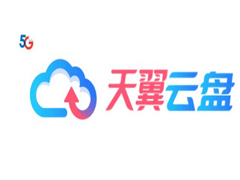这篇文章介绍了ASP.NET Core中的Blazor组件,文中通过示例代码介绍的非常详细。对大家的学习或工作具有一定的参考借鉴价值,需要的朋友可以参考下
@code{
public string Name { get; set; }
Pargrom 中:
Pages.Test test = new Pages.Test();
test.Name = "Blazor";简单来说,就是可以作为一个类来使用。@code{} 中定义的成员,就是类的成员。
成员正常使用 public 、private 等访问修饰符修饰。
默认静态资源文件位置在项目的 wwwroot 目录,前端(.razor、.cshtml)等,默认寻址时,使用绝对路径 / 即可访问资源。
例如:
<img alt="Company logo" src="/images/logo.png" />
这个路径是要放到前端才能,由前端访问时 ASP.NET Core 框架自动处理,相当于前端访问 / ,后端访问 D:/test/Blazor/wwwroot。
路由与路由参数
页面组件使用 @page 设置此页面的访问地址,这里没有 Controller 和 Action 的分层和路由导航(相对地址),直接是一个绝对的访问地址,并且全局唯一。
Index.razor 中,路由:
Blazor 不支持像 Controller 和 Action 那样设置灵活的 URL 可选参数(URL Query),例如:
[HttpGet("Test/{Id}")]
public string Test([FromQuery]int Id)
return "123";
Blazor 如果想通过 URL Query 传递参数,可以使用 {Name}:
@page "/test"
@page "/test/{Id}"
<h2>@Id</h2>
@code{
[Parameter]
public string Id { get; set; } = "123";
因为 Blazor 不支持可选参数,因此,如果只设置 @page "/test/{Id}",那么每次访问都必须带有这个参数值。
需要使用 [Parameter] 来修饰成员,才能捕获 @page "/test/{Id}"。
另外,理由参数是 string 类型,不能自动转为数值类型。不如会报错:
InvalidOperationException: Unable to set property 'Id' on object of type 'BlazorApp1.Pages.Test'. The error was: Unable to cast object of type 'System.String' to type 'System.Int32'.
你可以接收后,显式转为数值类型。
在 @code 代码块中,使用 [Parameter] 修饰的公共属性,那么这个属性就会标识为组件指定参数。
注意官网文档中,这个小节的代码示例,实际是不允许这样写得的。
目前,有两个地方需要使用 [Parameter] 特性,一个是前一小节的路由参数绑定,另一个是嵌入组件时使用。
示例:
Test.razor 文件内容:
<h2>@Title</h2>
@code{
[Parameter]
public string Title { get; set; } = "test";
别的组件嵌入 Test.razor 这个组件时,就可以使用 Title 传递参数进去:
请勿创建会写入其自己的组参数属性的组件
前面我们说到, [Parameter] 特性的使用,这个特性时作为参数传递而使用的。
对于路由参数,其修饰的属性应该是 privite,对于其它组件传递参数,属性应该设置为 public。
如果一个组件的 @code{} 成员不需要被外界作为参数使用,就应该设置为 private。
因为 .razor 一般不会作为类来使用。、;而且不设置 [Parameter] 的属性,别的组件也使用不了这个属性。
那么,文档说 “请勿创建会写入其自己的组参数属性的组件”,指定是 [Parmeter] 休息的属性,是作为参数传递使用的,不要在组件中修改这个属性的值。
如果实在要操作的话,可以先拷贝这个值,使用别的变量操作,示例:
<h2>@Title</h2>
@code{
[Parameter]
public string Title { get; set; } = "test";
private string _Title;
protected override void OnInitialized()
_Title = Title;
这样,组件要操作的话,可以使用 _Title ,保留 Title。
OnInitalized() 是一个组件初始化的方法,也可以理解成构造函数,可以参考 https://docs.microsoft.com/zh-cn/aspnet/core/blazor/lifecycle?view=aspnetcore-3.1#component-initialization-methods
因为组件是可以嵌套的,可以要求另一个组件显示要求的内容。
- 被多个组件使用,不同组件要呈现不一样的内容;
- 要根据父组件的配置,显示子组件;
- 组件 A 要求使用到的组件 B,显示其传递的内容;
简单来说,就是将页面内容作为复杂类型传递给另一个组件,要求这个组件显示出来。
那么,子内容指的是一个组件可以接收另一个组件的内容,使用 RenderFragment 来接收内容。
示例如下:
Test.razor 中,内容:
<div>@Children</div>
@code{
[Parameter]
public RenderFragment Children { get; set; }
另一个组件:
@page "/"
<Test Children=r />
@code{
private RenderFragment r =@<h1>测试子内容</h1>;
RenderFragment 的使用,请自行查阅资料。
属性展开是使用字典类型表示一个 Html 标签的多个属性。
<input id="1"
maxlength="@Maxlength"
placeholder="@Placeholder"
required="@Required"
size="@Size" />
<input id="2"
@attributes="InputAttributes" />
@code {
#region
private string Maxlength { get; set; } = "10";
private string Placeholder { get; set; } = "Input placeholder text";
private string Required { get; set; } = "required";
private string Size { get; set; } = "50";
#endregion
// 使用字典键值对表示
public Dictionary<string, object> InputAttributes { get; set; } = new Dictionary<string, object>()
{ "maxlength", "10" },
{ "placeholder", "Input placeholder text" },
{ "required", "required" },
{ "size", "50" }
[Paramter] 特性,只有一个属性,其定义如下:
public bool CaptureUnmatchedValues { get; set; }文档说明:[Parameter] 上的 CaptureUnmatchedValues 属性允许参数匹配所有不匹配任何其他参数的特性。
其作用是通过字典接收在父组件中出现但是未在 @code{} 中定义的参数属性。
例如:
Test.razor 中
@code{
// 这个属性没有用,随便起个名字测试
[Parameter]
public string A { get; set; }
[Parameter(CaptureUnmatchedValues = true)]
public IDictionary<string, object> AdditionalAttributes { get; set; }
父组件中使用:
<Test A="A"
B="B"
C="C" />B、C 都是 Test.razor 中没有出现过的,那么这些参数和参数值都会自动转为键值对存储到 AdditionalAttributes 中。
测试示例:
Test.razor 中的内容
@foreach (var item in AdditionalAttributes)
<li>@item.Key - @item.Value</li>
@code{
// 这个属性没有用,随便起个名字测试
[Parameter]
public string TTT { get; set; }
[Parameter(CaptureUnmatchedValues = true)]
public IDictionary<string, object> AdditionalAttributes { get; set; }
其它组件使用:
@page "/"
<Test TTT="ces"
id="useIndividualParams"
maxlength="10"
placeholder="Input placeholder text"
required="required"
size="50" />捕获对组件的引用
组件引用提供了一种引用组件实例的方法,使用 @ref 可以实现引用对参数的引用。
创建一个 Test.razor 文件,内容不限。
在一个组件中,引用该组件实例
@page "/"
<Test @ref="_test" />
@code{
private Test _test;
在使用 Test.razor 组件的同时,保留了引用,以便在 @code{} 中使用其成员。
在外部调用组件方法以更新状态
组件继承了 ComponentBase 类型,有个 InvokeAsync 方法可用于外界更新此 UI 的状态。
示例如下:
创建 MyUIServer 类型,
// 能够向所有正在打开的 Index.razor 页面发送通知
public static class MyUIServer
// 向所有人发送通知
public static async Task ToMessage(string message)
if (events != null)
await events.Invoke(message);
public static void AddEvent(Func<string, Task> func)
events += func;
public static void RemoveEvent(Func<string, Task> func)
events -= func;
private static event Func<string, Task> events;
在 Index.razor 中
@page "/"
@using BlazorApp1.Data
@implements IDisposable
<input @bind="_message" />
<button @onclick="Btn">发送消息</button>
@foreach (var item in messageList)
<li>@item</li>
@code {
private string _message;
private List<string> messageList = new List<string>();
// 进入页面时
protected override void OnInitialized()
MyUIServer.AddEvent(UIEvent);
// 退出当前页面UI后移除该事件
public void Dispose()
MyUIServer.RemoveEvent(UIEvent);
protected async Task UIEvent(string message)
// 组件自带的方法,用于外部调用更新状态
await InvokeAsync(() =>
messageList.Add(message);
StateHasChanged();
// 向所有正在访问 Index.razor 页面发送消息
private async Task Btn()
await MyUIServer.ToMessage(_message);
打开多个窗口,访问页面 https://localhost:5001/,在其中一个窗口输入内容并且点击按钮,即可将消息内容推送到其它窗口。
下面是一个修改官网示例的示例:
创建一个类型 NotifierService
public class NotifierService
public async Task Update(string key, int value)
if (Notify != null)
await Notify.Invoke(key, value);
public event Func<string, int, Task> Notify;
该类型的 Notify 可以绑定多个事件;通过调用 Update() 方法,可以触发各个事件。
在 Startup 中注入服务 services.AddSingleton<NotifierService>();。
Index.razor 中,内容为:
@page "/"
@using BlazorApp1.Data
@inject NotifierService Notifier
@implements IDisposable
<p>Last update: @_lastNotification.key = @_lastNotification.value</p>
@code {
private (string key, int value) _lastNotification;
protected override void OnInitialized()
Notifier.Notify += OnNotify;
public async Task OnNotify(string key, int value)
// 组件自带的方法,用于外部调用更新状态
await InvokeAsync(() =>
_lastNotification = (key, value);
StateHasChanged();
// 退出当前页面UI后移除该事件
public void Dispose()
Notifier.Notify -= OnNotify;
Test.razor 文件中:
@page "/test"
@using BlazorApp1.Data
@inject NotifierService Notifier
<input @bind="Key" />
Value:
<input @bind="Value" />
<button @onclick="Update">更新</button>
@code{
private string Key { get; set; }
private int? Value { get; set; }
private async Task Update()
await Notifier.Update(Key, Value.Value);
Key = string.Empty;
Value = null;
然后启动项目,一个页面打开 https://localhost:5001/ ,另一个页面打开 https://localhost:5001/test。
在 test 页面输入 Key 和 Value,点击按钮,即可通知到所有正在打开 Index.razor 的页面。
使用 @ 键控制是否保留元素和组件
在使用表格或了表等元素时,如果出现插入或删除、更新等情况,整个表格或列表,就会被重新渲染。这样会带来比较大的性能消耗。
一般使用绑定的元素,其更新是自动的,不需要人为控制。
在能保证每一项的某个元素列,都是唯一的时候,我们可以使用 @key 关键字来优化组件。
示例:
@page "/"
@using BlazorApp1.Data
<input @bind="_key" />
Value:
<input @bind="_value" />
<button @onclick="Add">添加</button>
<button @onclick="Remove">移除</button>
@foreach (var item in dic)
<li @key="item.Key">@item.Key - @item.Value</li>
@code {
private int? _key;
private int _value;
private List<MyData> dic { get; set; } = new List<MyData>();
private void Add()
if (_key == null)
return;
dic.Add(new MyData
Key = _key.Value,
Value = _value
_key = null;
private void Remove()
if (_key == null)
return;
dic.Remove(dic.First(x => x.Key == _key.Value));
_key = null;
@inherits 指令可用于指定组件的基类。 组件都默认继承了 ComponentBase 。
示例:
创建文件 TestBase.razor ,内容如下
@code{
protected int Id { get; set; }
创建 Test.razor ,文件内容如下
@inherits TestBase
@code{
public int Get()
return Id;
可以通过 @attribute 指令在 Razor 组件中指定组件的特性(属性)。 例如页面需要登录才能访问,则添加 [Authorize] 。
@page "/"
@attribute [Authorize]
当要使用的组件与当前组件在同一个命名空间时,不需要“导入”,如果两者不在同一个命名空间,则可以使用 @using 导入此组件。
原始 HTML
使用 MarkupString 类型可以将字符串转为 HTML 元素对象。











